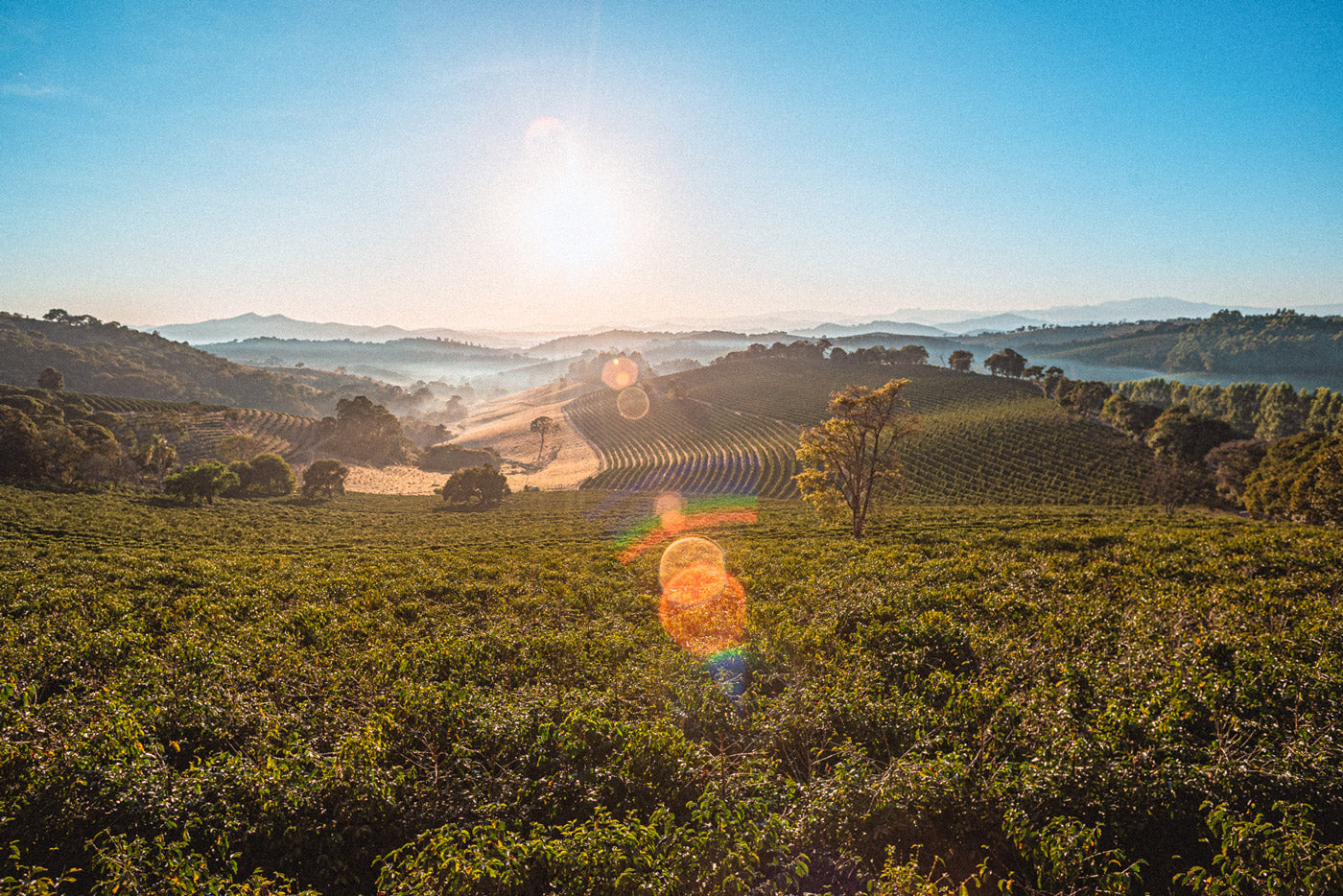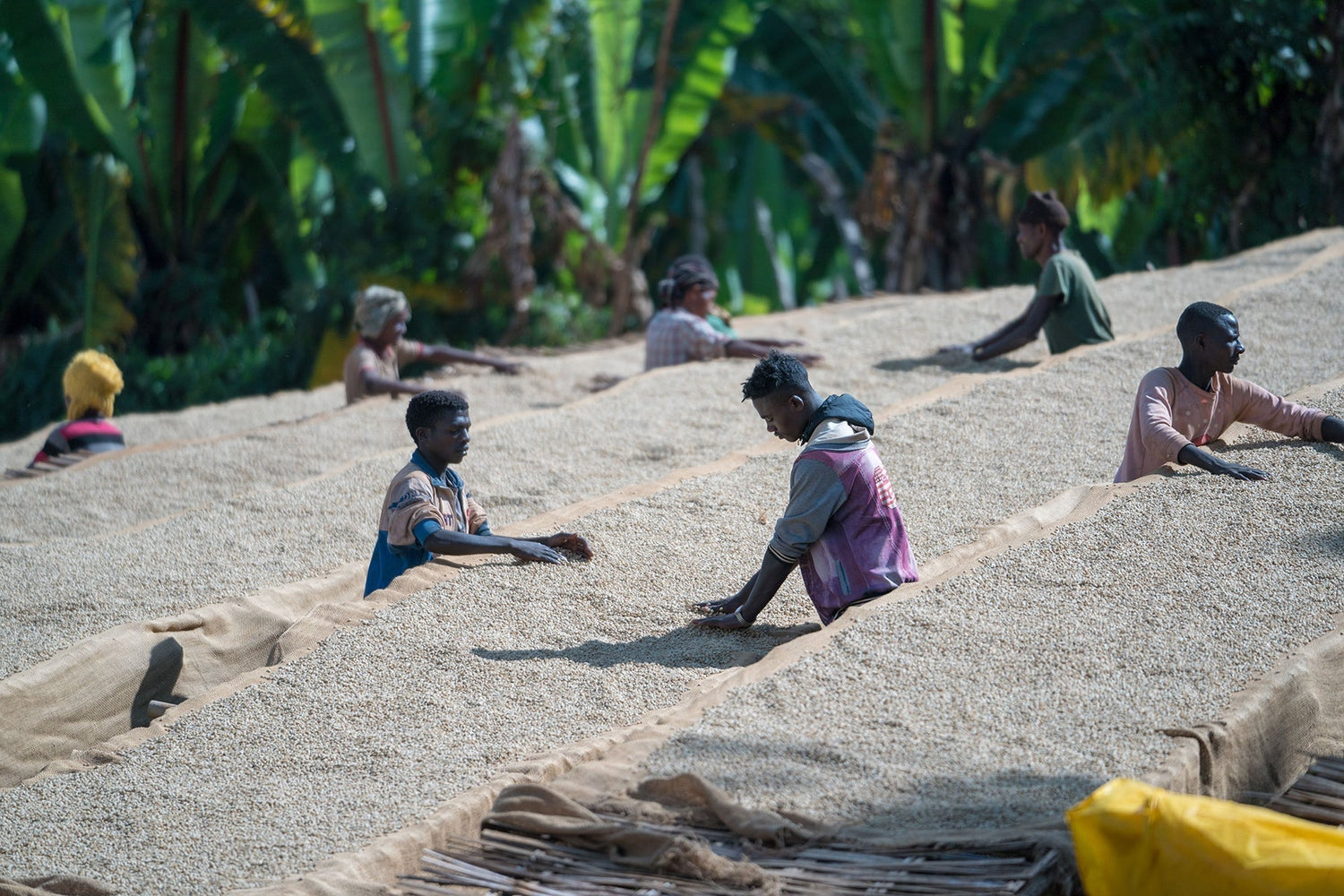Fruity coffee? Is there such a thing? Of course! We often get asked which coffee is particularly fruity, or how to best prepare fruity coffee. In this article we would like to introduce you to the wide variety of filter coffee and show you how to get the best out of fruity coffee . We will also show you how fruity coffee gets its exciting notes in the first place. Elias Fischbacher from the Wildkaffee Rösterei wishes you lots of fun discovering.

Fruity coffee - country of origin and external influences
How does coffee actually become fruity? Fruity coffee goes through a rather lengthy production process that begins on the farm. A number of factors come into play here. Let's start with the countries of origin . It should already be known that the different countries of origin of the coffee beans also bring with them different flavors.
While Brazilian coffee, for example, tastes a little nutty and chocolatey, Kenyan coffees are fruitier. Various natural influences have a big influence on this. The nature of the soil in particular plays a large part in this. The more nutrient-rich the soil, the fruitier the coffee. I always like to use Kenya Kangiri as a good example of fruity coffee. The altitude at which it is grown and the nutrient-rich soil make this a very fruity coffee.
Fruity coffee - the preparation!
Another crucial point is the processing of the beans. Processing is the process of separating the flesh of the coffee cherries from the actual beans. The farmers primarily sell the green beans, which we know as raw coffee. The decisive difference between processing and fruity coffee is the influence on the end product in our cup.
In recent years in particular, a lot of experimentation has been done with the processing process in order to respond to new trends and customer demand. The various processes are largely responsible for the interesting notes of fruity coffees. Anaerobic and washed processing methods are particularly typical for fruity coffee . The coffee cherries are fermented in large tanks or sacks for several days or hours before they are dried on special drying beds for several weeks and constantly rearranged. Of course, the various processing methods differ from one another. You can find more information about the processes here .
Fruity coffee - Our instrument: roasting!
Let's move on to the tool we use for fruity coffees: roasting ! The degree of roasting of the beans is also very important for fruity coffee. The coffee must be lightly roasted in order to retain the pronounced, complex acids that make the coffee fruity. This brings out the characteristics of the respective green coffee better. If the coffee is roasted too darkly, as is the case with espresso roasts, the acids are lost and the coffee becomes more bodyy . If the coffee is lightly roasted, the result is fruity coffee that can evoke notes of citrus, jasmine, mandarin and many other exciting flavors.
Each coffee is an individual and needs its own roasting profile in order to get the most out of the bean. When new beans arrive, we have to carry out a few test roasts in our Roest mini roaster in order to gradually perfect the roasting level. Especially with fruity coffees that require a light roast , this requires a lot of patience and perfectionism in order to perfect the different steps of the roasting process. The variety and growing height also play a major role . While coffee that has grown lower has a lower density, the density of coffee that has grown higher is significantly higher.

Which preparation goes well with fruity coffee?
It doesn't actually take much to prepare fruity coffee properly. Because the coffee is lightly roasted, it is perfect for preparing as filter coffee . But there are also subtle differences. The most common method is to prepare it in the classic way, using a hand filter. The filter paper ensures that the suspended particles and oils that are naturally contained in the coffee are filtered out. In short, this means that no bitter substances get into your coffee , which makes it taste fruity and puristic.
If you like your coffee more purist and fruity, the Chemex is a good choice. The filter paper is a good deal thicker and filters out the suspended particles and oils in the coffee even more explicitly, which makes the coffee taste even fruitier and clearer. The Chemex is also referred to as a unique method of preparation , because the taste cannot really be compared to that of a normal hand filter.
Last but not least, I'll show you what is probably the most exciting preparation method when it comes to fruity coffee. The AeroPress . This versatile brewing method produces probably the fruitiest coffee. The futuristic brewer is very versatile and can be used for any degree of roast. However, we'll stick with the light roasts for particularly fruity coffee. The AeroPress is also equipped with a small paper filter, which ensures that no bitter substances can develop. Another feature is the natural cloudiness, which gives you the end result. Light roasts prepared in the AeroPress produce extremely fruity coffee, with almost syrupy-sweet notes. Here, too, I recommend the Kenia Kangiri , which produces particularly fruity coffee. But other coffees such as our Ruanda Umusazi Natural also provide a completely new taste experience.


Fruity coffee prepared as espresso
If you're a little more adventurous, you can also try your fruity coffee as an espresso . Such espressos are particularly light and very fruity. A sweetness is also noticeable, which creates a harmonious picture, especially in a cappuccino . In combination with milk, they taste like chocolate or cocoa. On their own, the espresso tastes less bitter, but the acids are more intensely noticeable.
Conclusion!
Let's briefly summarize the individual points again. Fruity coffee is the result of the interaction of various components: country of origin, soil quality, cultivation altitude, processing and roasting . Light roasts make for fruity coffee, as the flavor-giving acids remain and can develop. They should be prepared using the usual filter methods, e.g. the classic hand filter or the Chemex .
The AeroPress provides a completely different taste experience and gets the maximum fruitiness out of your coffee bean. Light espressos are also a great change. They taste less bitter, but much fruitier and more acidic than dark espresso roasts . #staywild


